How The Fabulous Drag Queens Started
Thanks to RuPaul’s Drag Race, drag queens are becoming popular today as they grace the television, magazine covers, videos, and podcasts.
However, the emergence of these wonderful queens dates back to as early as the 16th century.
Believe me; a lot has happened since then!
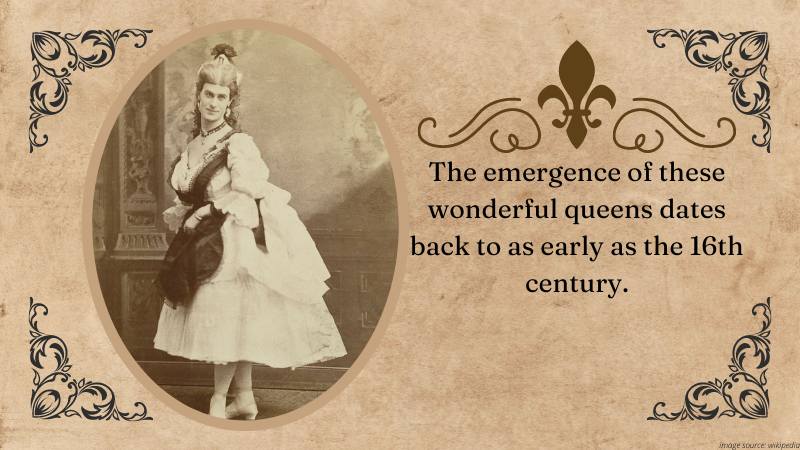
I have always loved drag queens, and I did my research.
Let’s travel back in time and look at how drag queens started – from the Shakespearean era, Vaudevilles, Drag Runway Pageants, and more!
Read this blog and discover the fabulous journey of these beautiful drag queens that serve as your inspirations!
1. Where “Drag” Came From
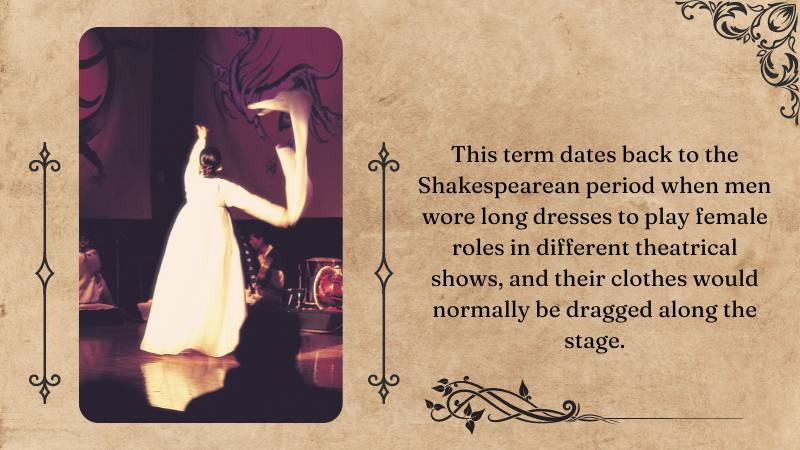
You’re probably wondering why drag queens are called such; I was personally shocked when I learned about the history of the word “drag.”
According to resources, this term dates back to the Shakespearean period when men wore long dresses to play female roles in different theatrical shows, and their clothes would normally be dragged along the stage.
With this, the word “drag” was born!
However, drag queens weren’t admired as much as they are today in the past.
While “drag queens” pointed out the banning of female actors in the past, today, they refer to brave men who love to express a different side of their identity, one with exaggerating feminine style, body language, and loos to create a female and expressive persona.
2. The 16th Century
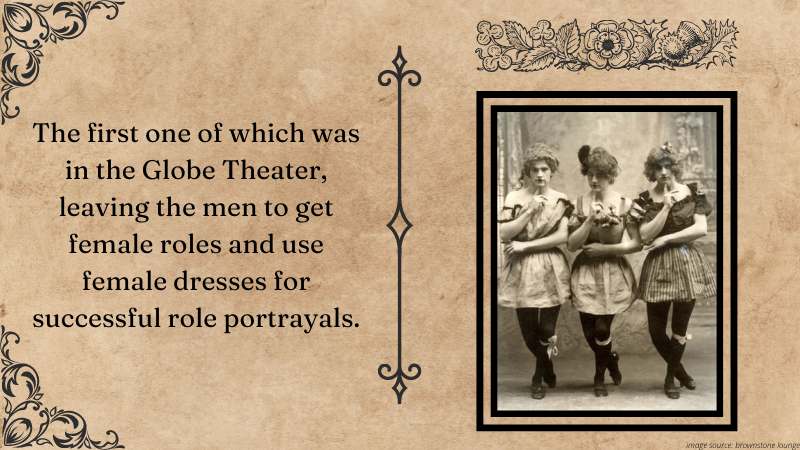
Drag was born in the late 16th century in Western cultures, and when the church banned female actors from performing in Shakespearean theater, the first one of which was in the Globe Theater, leaving the men to get female roles and use female dresses for successful role portrayals.
This is also the period when the word “drag” was born and was used to call these male actors.
3. The Arrival of Princess Seraphina
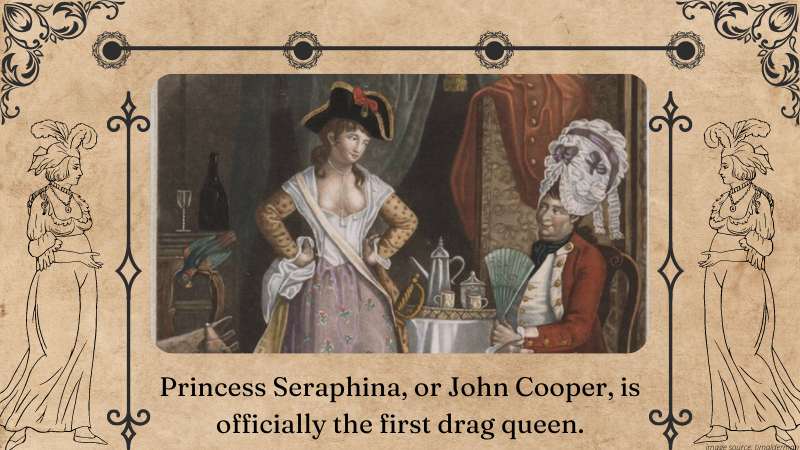
According to history, Princess Seraphina, or John Cooper, is officially the first drag queen.
John Cooper was a servant for the gentlemen and often visited houses for mollies or gay men.
He was also a famous crossdresser in London, and portraying the role of Princess Seraphina was more of his daily hobby than portraying a female role in theater plays.
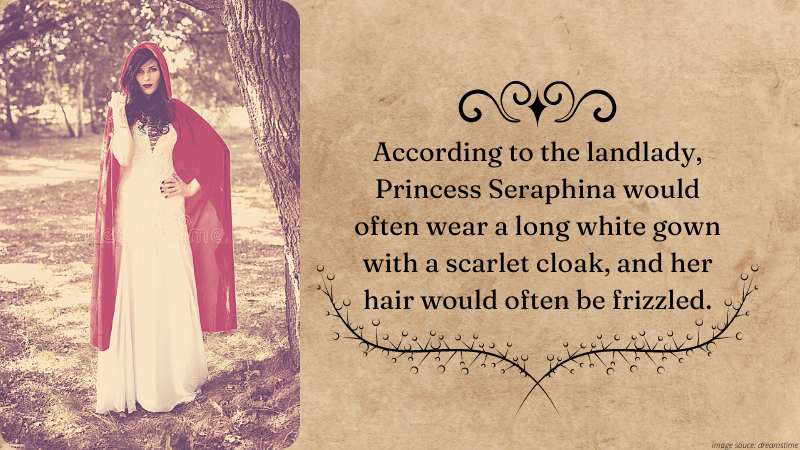
During the 18th century, when men were ordered to be hunged when participating in gay acts, no written reports claimed Princess Seraphina’s death.
I was even more fascinated when I found a written account of John Cooper from Mary Poplet, a landlady.
According to the landlady, Princess Seraphina would often wear a long white gown with a scarlet cloak, and her hair would often be frizzled.
She loves joining balls and masquerades, and no one would recognize that she is actually a man.
4. Vaudeville Became A Trend
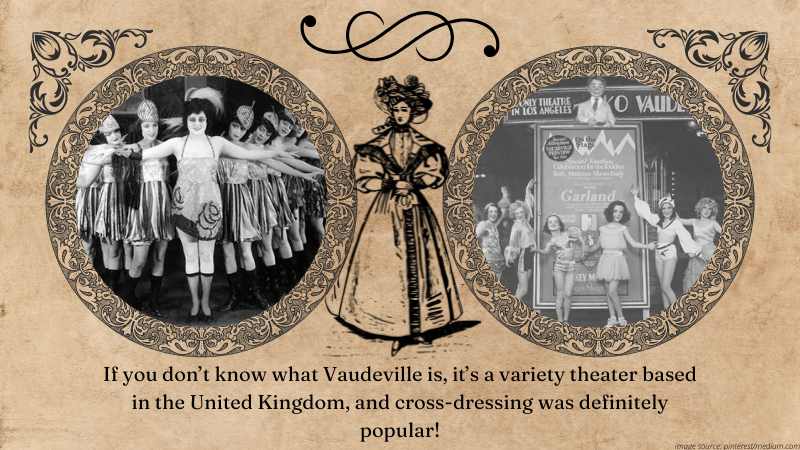
During the early 20th century, drag became more about the individuals, with the queens building their fanbases.
Julian Eltinge was the biggest star, and he emerged from vaudeville.
If you don’t know what vaudeville is, it’s a variety theater based in the United Kingdom, and cross-dressing was definitely popular!
During the vaudeville era, female impersonation was a famous entertainment.
Every time Eltinge performed, he would remove his wig, revealing his true gender, and crowds would usually scream in disbelief.
He gained the title of being the highest-paid actor globally, even surpassing Charlie Chaplain!
Her career was certainly on the rise for 20 years until vaudeville fell during the 1930s.
5. The Pansy Craze
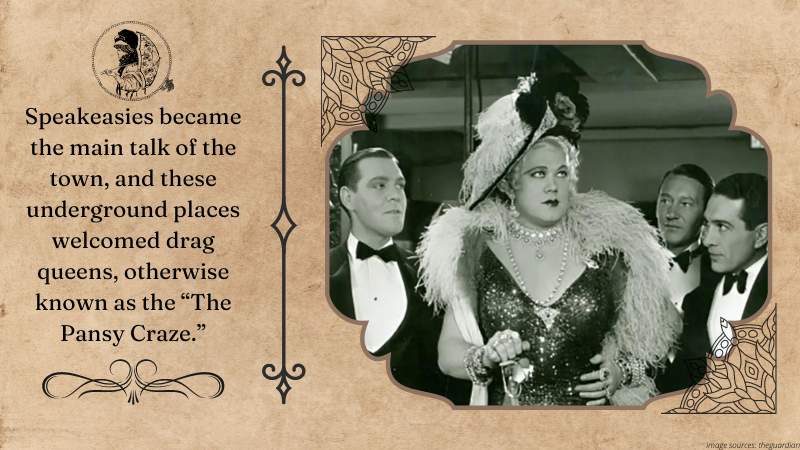
After the fall of vaudeville, the United States entered the prohibition period, where the production and consumption of alcohol were abolished.
During the prohibition era from the 1920s to 1933, speakeasies and underground clubs served as the outlet for gay men where they could freely express their true identity and enjoy themselves.
Speakeasies became the main talk of the town, and these underground places welcomed drag queens, otherwise known as the “The Pansy Craze.”
The queer loved to travel to the cities and joined shows in speakeasies because they were the only place where they could be free.
Even when there was a continuous chase between the police and gay culture, the gay community and the drag queens continued to flourish.
On December 5, 1933, the Prohibition Era officially ended.
Liquor licenses were given to proper establishments with good morals, while the speakeasies that welcomed the drag race were left to shut down.
6. The Drag Runway
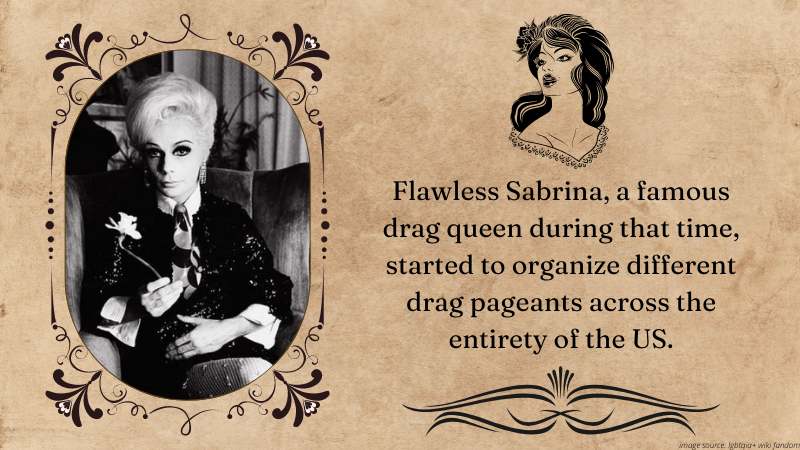
In 1966, the Stonewall in the Greenwich Village of Manhattan became an epicenter where various riots between gay men and the rest of the community happened.
Even with these circumstances, Flawless Sabrina, a famous drag queen during that time, started to organize different drag pageants across the entirety of the US.
The drag pageants featured different drag queens showcasing their natural beauty by wearing wigs, makeup, and long gowns.
Flawless Sabrina was arrested multiple times. However, this did not stop her from continuously appearing as a drag queen in public and joining several talk shows.
LGBTQ members of different races and ethnicities found their safe spaces in Washington Heights and Harlem, two famous neighborhoods in uptown Manhattan.
In the 1970s, the drag “ball” culture originated, and several drag queens would organize and join different Pose and masquerades.
7. Drag in the Mainstream
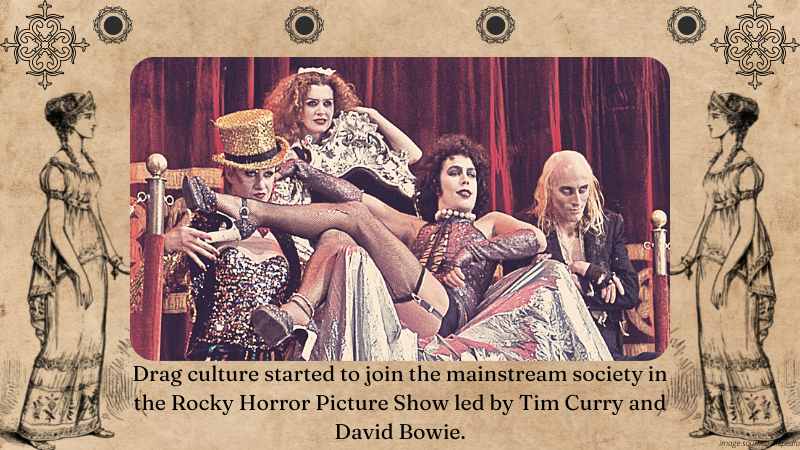
In the late 1970s, drag culture started to join mainstream society in the Rocky Horror Picture Show led by Tim Curry and David Bowie, a famous musician.
Gay Liberation Front
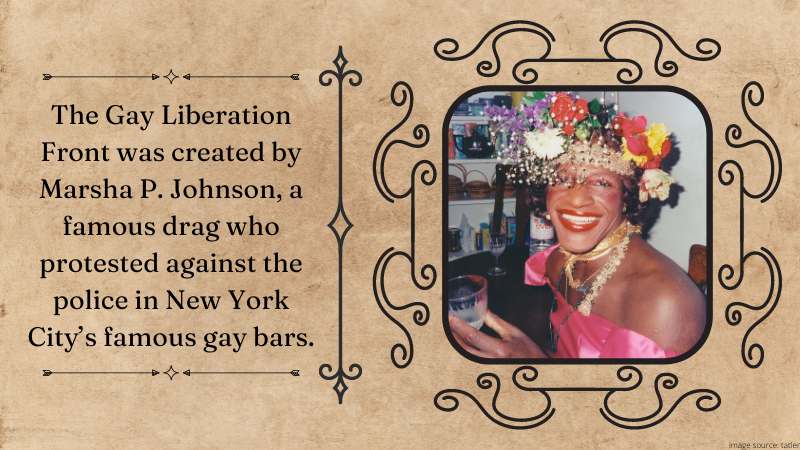
Because of the Stonewall Riot in 1969, drag queens were more recognized.
The Gay Liberation Front was created by Marsha P. Johnson, a famous drag who protested against the police in New York City’s famous gay bars.
From the 1970s to the 1980s, the drags’ fight for equality and acceptance continued, and Harvey Milk was the first gay man who was voted into San Francisco’s public office in 1977.
The 1980s to 1990s
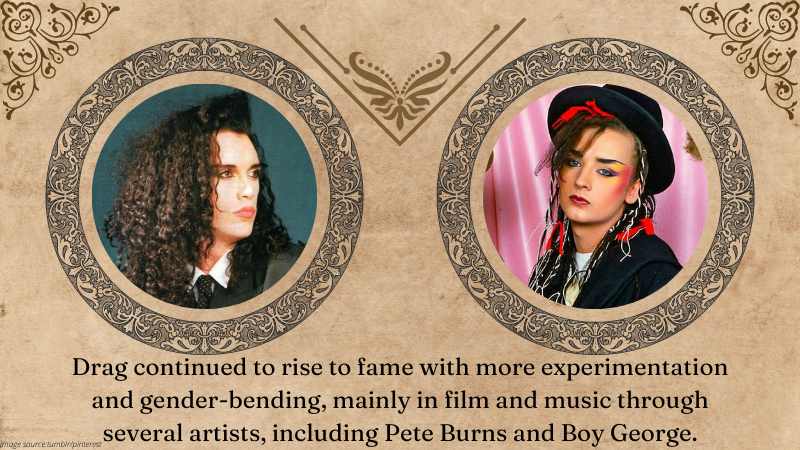
Drag continued to rise to fame with more experimentation and gender-bending, mainly in film and music, through several artists, including Pete Burns and Boy George.
Thanks to RuPaul Charles, the 1990s was the most mainstream period for drag, which I believe is also one of the crossdressers’ inspirations until today!
RuPaul’s Rise to Fame
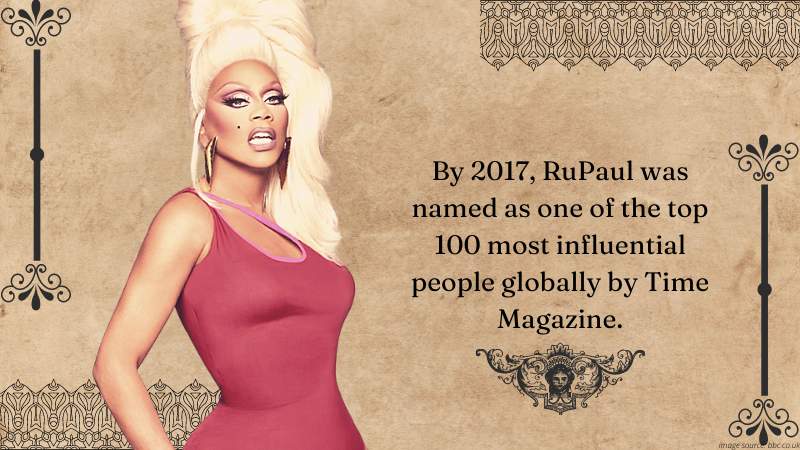
RuPaul started to become famous in the early 1990s in New York City.
He was only a local celebrity before becoming one of the most sought-after drag queens today.
RuPaul experienced his first success with his hit single “Supermodel (You Better Work)” in 1993.
His drag persona, paired with his singing career, definitely paved his way to the top.
RuPaul even experienced performing with Elton John!
Soon after, he became the first drag queen to become MAC’s spokesperson and had his talk show that aired on VH1 and WKTU’s morning radio show.
2009 was the debut year of his reality series “RuPaul’s Drag Race.”
By 2017, RuPaul was named one of the top 100 most influential people globally by Time Magazine.
Let me tell you one thing: I love this hit series so much and even got used to using different drag slang I hear whenever I watch RuPaul’s Drag Race! Here are some of the common words:
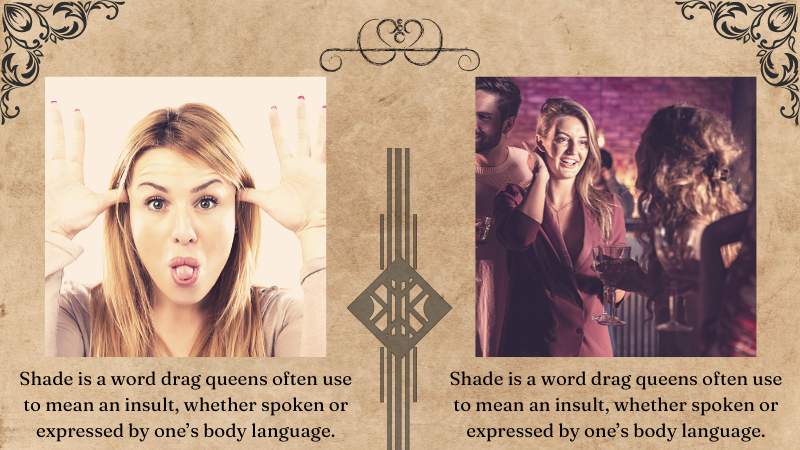
Shade
Shade is a word drag queens often use to mean an insult, whether spoken or expressed by one’s body language.
When you “throw” a shade against someone, you’re openly disparaging him, regardless of whether they are present or not.
Realness
Realness refers to when a drag queen successfully blends into a given situation.
For instance, in RuPaul’s Drag Race, when a runway theme is The Western, and one of the contestants wears a perfect combination of gingham, a pair of boots, pigtails, and Stetson, that contestant is “serving up real cowgirl realness.”
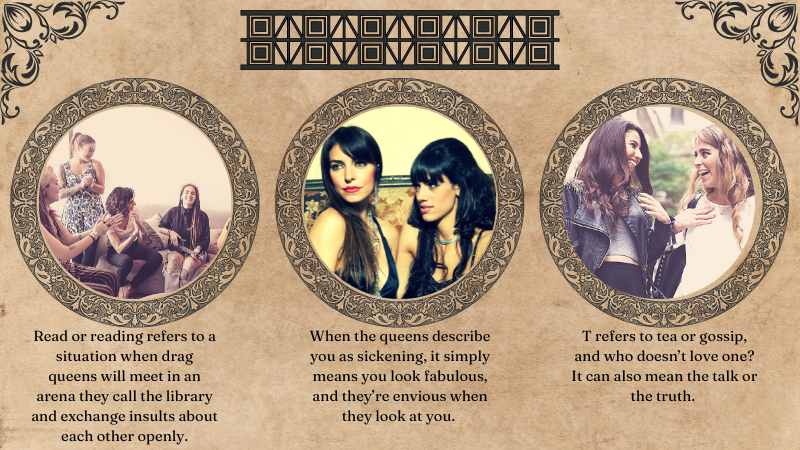
Read
Read or reading refers to a situation when drag queens meet in an arena they call the library and exchange insults about each other openly.
It’s a playful sport, and its main goal is for the drag queens to throw the wisest and most ingenious verbal takedown against each other.
One important rule of this sport is that the queens must all end on good terms once they’re done.
Sickening
When the queens describe you as sickening, it simply means you look fabulous, and they’re envious when they look at you.
Therefore, stand tall and be proud of it when they tell you you’re sickening!
T
T refers to tea or gossip, and who doesn’t love one? It can also mean the talk or the truth.
If you promise your fellow queens a T over lunch, they will definitely show up excited and prepared to listen to what you say!
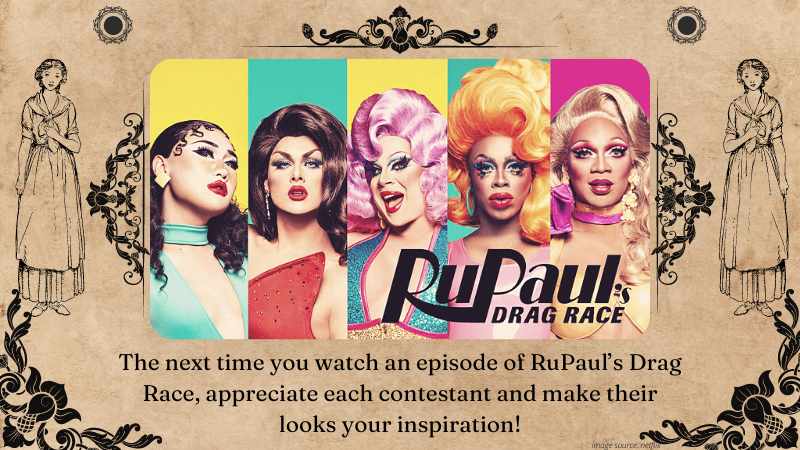
Now that you know how these fabulous queens started and the challenges they faced in the past, I’m certain that you are prouder than ever for your drag queen friends out there!
The next time you watch an episode of RuPaul’s Drag Race, appreciate each contestant and make their looks your inspiration!
What other past stories of drag queens do you know? Let me know in the comments below!
Tagged With:Drag History , Drag Queen , What Is a Drag Queen
- How to Keep Your Panties Clean When You Get Excited While Crossdressing?
- How to Look More Feminine: A Step-by-Step Guide for Crossdressers
- A Beginner’s Guide to Crossdresser Lingerie: Tips for Finding Your Perfect Set
- Embracing Feminine Elegance: A Guide for Muscular Crossdressers
- What To Pack in Your Trans Girl Emergency Bag So You Can Stay Safe Everywhere You Go
- Secret Sissy Living: How to Build a Safe Sissy Routine When You’re Not Out Yet
Established in 2009, We are a recognized manufacturer and seller of professional crossdressing products.
It is our aim to become not just the most creative manufacturer but also a very considerate seller, as we provide the best quality products for crossdressers all around the world.







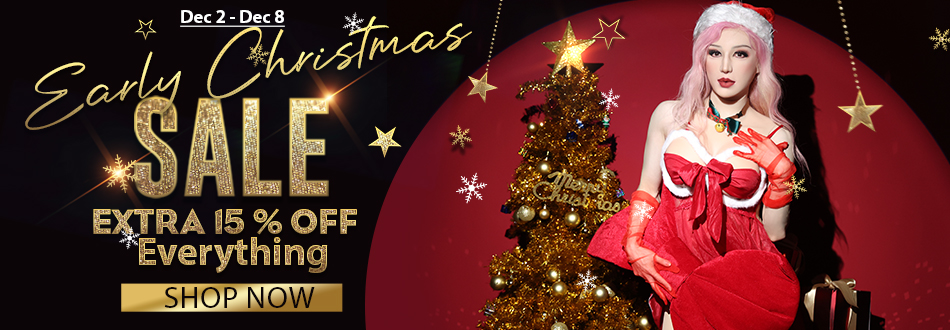


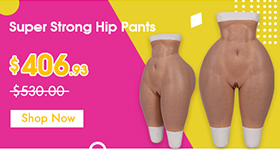

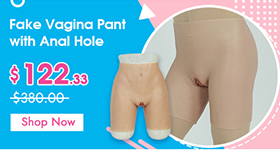

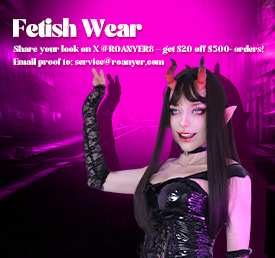

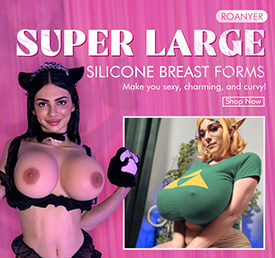
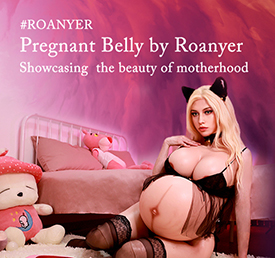


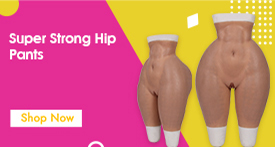
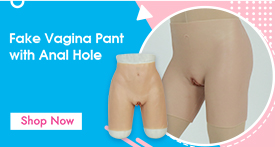

 Breast Forms
Breast Forms  Body Suit
Body Suit  Realistic Mask
Realistic Mask  Femini Girdle
Femini Girdle Hip & Butt Enhancement (8)
Hip & Butt Enhancement (8) Penis Prosthesis
Penis Prosthesis Fake Muscle
Fake Muscle Bikini
Bikini  Wig
Wig  Corsets
Corsets Course
Course service@roanyer.com
service@roanyer.com +8618652200711
+8618652200711 Facebook
Facebook YouTube
YouTube Twitter
Twitter Instagram
Instagram




